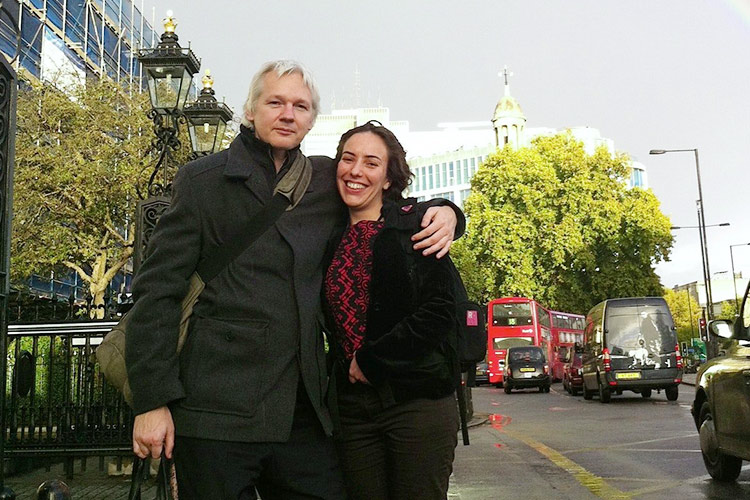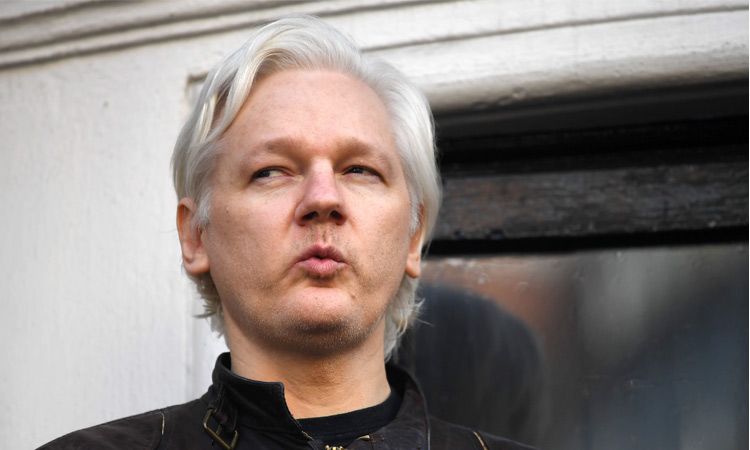Assange and right to ‘liberate’ the mail of the ruling class

Julian Assange.
Jon Wiener, Tribune News Service
Fifty years ago this spring, Harvard students occupied the school›s administration building, demanding that the university end its complicity in the Vietnam War by kicking ROTC off campus. The student demands also included creating a black studies program and ending evictions of working-class people from property the university wanted to develop.
We didn›t realize at the time that we were also raising another issue that continues to resonate today: whether the 1st Amendment protects the publication of “stolen” documents — a question back in the headlines today with the Trump administration›s indictment of Julian Assange, publisher of WikiLeaks, for espionage.
In 1969, the building occupation ended when Harvard called in the police, who not only arrested the occupiers but also beat hundreds of students who came to see what was going on. After that, 10,000 students met at the stadium and voted to strike.
What the police and the administration didn›t know at the time was that, before leaving the building, one of the occupiers removed files from the office of the president and dropped them off outside the office of the Old Mole, a Cambridge underground newspaper (whose name came from Karl Marx: “Our old friend, our old mole, who knows so well how to burrow underground, suddenly to appear: the revolution”). I was a member of the Old Mole collective and a Harvard graduate student at the time.
The trove included letters sent by Harvard Dean Franklin Ford to the college›s president, Nathan Pusey, and they documented the university›s ties to the CIA and the Pentagon. More important for the strike, however, was one letter from Ford to Pusey suggesting different strategies for undermining faculty support for ending ROTC. We decided to publish several of the “liberated” documents, under the triumphant title, “Reading the Mail of the Ruling Class.”
Many on the faculty were outraged at the dean, and soon ROTC left Harvard. But the mainstream media, led by the New York Times, denounced the Old Mole as “lawless” for publishing the purloined papers. There was a certain irony to that given that, just two years later, the New York Times published a different set of “stolen” documents. They called them “the Pentagon Papers.”
The documents obtained and published by the Times (as well as by other publications including the Los Angeles Times and the Washington Post) were a secret Defense Department history of the Vietnam War that had been copied by Daniel Ellsberg from files at the Rand Corp. in Santa Monica.
The Nixon administration tried to stop publication, claiming it would “endanger national security,” and the Times went all the way to the Supreme Court arguing that the 1st Amendment protected its right to publish. The court ruled for the Times. (Nixon then went after Ellsberg, putting him on trial for “espionage,” but the charges were dismissed because of prosecutorial misconduct.)
Fifty years after the Old Mole controversy, debate over publishing stolen documents has been renewed with the Trump administration›s indictment last week of Assange on 17 counts of violating the Espionage Act.
In 2010, WikiLeaks posted on its website devastating material that Army intelligence officer Chelsea Manning had copied from Iraq war logs and diplomatic documents, most notably video shot by American soldiers in an Apache helicopter in 2007 of them killing at least 18 civilians, including two Reuters journalists, on the streets of Iraq — something I believe should have been prosecuted as a war crime. The video made headlines around the world — including in the New York Times.







